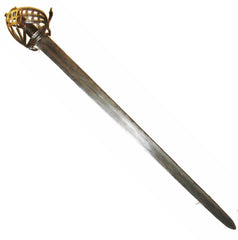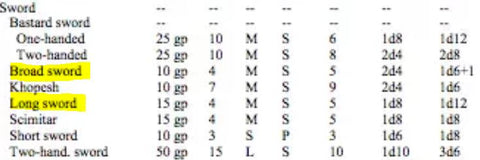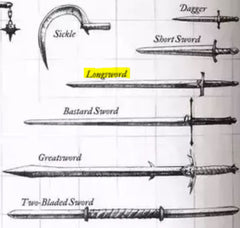Longsword vs Broadsword
2 minute read
The words “Longsword” and “Broadsword” are commonly used to describe different types of swords. However, their modern definitions are quite different to what they were historically.
The Longsword
The word “longsword” originally (circa 11th century) referred to a one-handed sword with a long blade. Long, of course, is subjective, but for a long time, there were no definite criteria for being a longsword other than that they were longer than some other sword. This trend continued until around the 15th century, when we have documents that describe swords similar to today’s definition of a longsword – a hand-and-a-half double-edged sword with a simple cross hilt, its blade usually measuring around 1 metre in length. However, the ambiguous naming of the long sword continued up until the 17th century.
The Broadsword
Similar to the longsword, a broadsword historically (15th century and earlier) meant a sword that carried a blade broader than a common reference sword of the time. In the 16th-17th centuries, mercenaries hired by Venice carried basket-hilted swords that could be either single-edged (backsword) or double-edged. In the 18th-19th centuries in Scotland, the highlanders used swords that would fit the modern definition - a basket-hilted one-handed sword with two edges and a medium-length cut-and-thrust blade. This definition has been carried down and is now commonly used in historical fencing clubs. However, as late as the 19th century in Hungary were used swords called longswords (but today would be called sabers), because they were broader than the popular dueling swords of the time (sword similar to rapiers). Interestingly enough, shortswords, or smallswords, at that time generally referred to a sword that was shorter or smaller than a rapier, which does not necessarily mean the swords were small – as rapiers had 76cm long blades.
Colloquial Use
So, if modern definitions are defined mostly by historical fencing groups, why are they used so differently in common speech? Well, the answer for this, interestingly enough, seems to come from D&D and other similar games, when the creators of the games needed to differentiate many similar types of swords from one another for gameplay reasons. Thus, they arbitrarily named one a longsword and another a broadsword based on how they compared to other historical swords that were included.





